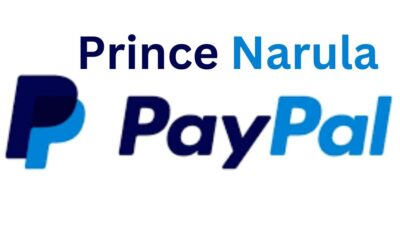TECHNOLOGY
Mastering the Craft of Code through Unwritten Wisdom

In the vast world of programming, some of the most crucial lessons aren’t found in textbooks or online courses—they’re learned through experience and shared wisdom. Whether you’re just beginning your coding journey or have been on this path for years, tapping into these unspoken rules can significantly enhance your skills and mindset. This blog post explores these hidden gems of coding wisdom, offering insights and tips to guide both the novice and the seasoned developer. From mastering the art of collaboration to understanding the subtleties of maintaining code integrity, you’ll discover valuable lessons that can elevate your coding craft.
The Art of Writing Clean Code
Writing clean code isn’t just about aesthetics; it’s a crucial practice that ensures your code is easy to read, maintain, and scale. Clean code is like a good book—clear, concise, and engaging. It communicates its purpose without unnecessary complexity.
Start by focusing on naming conventions. Choose names that clearly describe the role or function of variables, functions, and classes. This makes your code more intuitive and easier to understand for others, and even for your future self. Consistent naming also helps to establish a pattern, making it easier to spot anomalies or errors.
Next, prioritize simplicity. Avoid the temptation to use complex constructs when simpler ones will do. This doesn’t mean sacrificing functionality; rather, it’s about achieving the same outcome with less complexity. A simpler codebase is easier to debug and less prone to errors, and it often runs more efficiently.
Finally, maintain modularity. Break down your code into smaller, reusable components. This encourages code reuse and makes testing and debugging much more straightforward. Modularity also fosters collaboration, as different team members can work on separate components simultaneously without causing conflicts.
The Importance of Comments and Documentation
Comments and documentation are often seen as optional extras in coding, but in reality, they are fundamental to creating sustainable, scalable software. They serve as a bridge between developers, conveying crucial information about the code and its intended functionality.
Begin with inline comments. These should be used sparingly and only to explain why a piece of code does something, not what it does. The code itself should be self-explanatory, thanks to clear naming conventions and structure. When comments are necessary, keep them concise and to the point.
Documentation goes hand in hand with comments. While comments provide insight into specific code blocks, documentation offers an overview of the entire system. This includes API documentation, user manuals, and technical specifications. Comprehensive documentation ensures that anyone stepping into your codebase can quickly understand its functionality and purpose.
Regularly update your comments and documentation to reflect code changes. Outdated or incorrect information can be more harmful than no information at all, leading to confusion and errors. Set a routine to review and update documentation as part of your development process.
Testing Isn’t Optional
Testing is a critical part of the coding process, yet it’s often overlooked or rushed. Proper testing ensures that your code functions as expected and helps catch bugs before they become bigger issues.
Start with unit testing. This involves testing individual components or functions to ensure they perform correctly. Unit tests are quick to write and execute, making them an efficient way to verify the smallest parts of your code. They’re especially useful during development, as they provide immediate feedback.
Integration testing comes next. This type of test ensures that various components of your system work together as intended. It’s crucial for catching issues that might not be apparent during unit testing, such as data flow problems or interface mismatches.
Finally, don’t ignore regression testing. Every time you modify your code, there’s a risk of introducing new bugs or reactivating old ones. Regression testing verifies that recent changes haven’t adversely affected existing functionality. Automated testing tools can help streamline this process, ensuring your code remains robust and reliable.
Mastering Version Control
Version control is an essential skill for any developer, providing a systematic way to track and manage changes to your codebase. It’s vital for collaboration, helping teams work together efficiently without overwriting each other’s work.
Begin with understanding the basics of systems like Git. Learn how to commit changes, merge branches, and resolve conflicts. These fundamental skills will form the backbone of your version control knowledge, allowing you to manage your code effectively.
Branching strategies are another critical aspect. Adopt a strategy that suits your team’s workflow, whether it’s Git Flow, feature branching, or trunk-based development. A well-defined strategy helps prevent conflicts and ensures a smooth development process.
Don’t forget about pull requests. These are a great way to review code changes before they’re merged into the main branch. They provide an opportunity for collaborative discussion and feedback, improving code quality and team communication.
Understanding the Power of Refactoring
Refactoring is the process of restructuring existing code without changing its external behavior. It’s a vital part of maintaining a clean and efficient codebase, ensuring that your software remains agile and adaptable.
Start by identifying code smells. These are indicators of potential issues in your code, such as duplicated logic, large classes, or long methods. Recognizing these signs is the first step in determining where refactoring is needed.
Focus on incremental changes. Refactoring doesn’t mean rewriting your entire codebase. Instead, make small, manageable changes that improve your code’s structure and readability. This approach minimizes risk and makes it easier to test and verify each change.
Finally, integrate refactoring into your regular development process. Treat it as an ongoing activity rather than a one-off task. By regularly revisiting and improving your code, you can prevent technical debt from accumulating and ensure your software remains robust and performant.
The Nuance of Code Reviews
Code reviews are an integral part of the development process, offering a chance for team members to share knowledge, catch potential issues, and improve overall code quality. They foster a collaborative environment and promote best practices.
Approach code reviews with an open mind. Be prepared to give and receive constructive feedback, focusing on the code rather than the coder. This mindset helps create a positive and productive review process.
Establish clear guidelines for reviews. These should cover aspects like coding standards, documentation expectations, and testing requirements. Having a consistent framework ensures that reviews are fair and effective, leading to higher-quality code.
Use code reviews as a learning opportunity. They’re a chance to gain insights from your peers and share your expertise. Encourage junior developers to participate in reviews, as this can be an invaluable learning experience for them.
The Balance Between Performance and Readability
One of the ongoing challenges in coding is finding the right balance between performance and readability. While it’s important to write efficient code, readability should not be sacrificed in the pursuit of optimization.
Start by writing clear, straightforward code. Prioritize readability, as this makes it easier for others to understand and maintain your code. Remember that today’s code is tomorrow’s legacy code, and clarity is key to longevity.
Consider performance when necessary. If your code has a significant impact on the system’s performance, consider refactoring to improve efficiency. Use profiling tools to identify bottlenecks and focus your optimization efforts there.
Finally, document performance decisions. If you choose performance over readability in specific instances, ensure that these decisions are well-documented. This helps others understand the reasoning behind your choices and maintains transparency in your codebase.
The Role of Continuous Learning
The tech industry evolves rapidly, and developers must continue to learn and adapt to stay relevant. Continuous learning is a crucial part of a developer’s growth, enabling you to expand your skill set and explore new technologies.
Start by setting aside dedicated learning time. Whether it’s an hour a day or a few hours a week, make sure you have regular opportunities to learn new concepts and techniques. This could involve online courses, tutorials, or even personal projects.
Engage with the developer community. Participate in forums, attend conferences, and join local meetups. These platforms offer a wealth of knowledge and provide opportunities to learn from others’ experiences and insights.
Stay curious and open-minded. Technology will continue to change, and there will always be something new to learn. Cultivating a mindset of curiosity will help you remain adaptable and ready to tackle future challenges.
Collaborating Effectively with Others
Coding is seldom a solitary activity, especially in a team setting. Effective collaboration is crucial for delivering high-quality software, fostering innovation, and building a cohesive team.
Communicate openly and honestly with your teammates. Clear communication helps prevent misunderstandings and ensures that everyone is aligned with the project’s goals and objectives. Regular check-ins and meetings can facilitate this process.
Leverage tools for collaboration. Platforms like Slack, Jira, and Trello can help streamline communication, task management, and project tracking. These tools provide a centralized place for sharing information and keeping everyone on the same page.
Foster a culture of respect and inclusivity. Encourage diverse perspectives and welcome input from all team members. This diversity can lead to innovative solutions and a stronger, more cohesive team.
The Ethical Responsibility of Developers
With great power comes great responsibility. Developers have a significant impact on society, and it’s essential to consider the ethical implications of your work. Ethical coding practices ensure that your software benefits users and society as a whole.
Prioritize user privacy and data security. Ensure that your code protects sensitive information and adheres to relevant data protection regulations. This is not only a legal obligation but a moral one as well.
Consider the social implications of your software. Think about how your code might impact different user groups and strive to create inclusive, accessible solutions. This involves considering issues like accessibility, bias, and equity.
Stay informed about ethical standards and best practices. Engage in discussions about ethics in technology and seek guidance from industry leaders and organizations. This helps ensure that you make informed decisions that align with your values.
Conclusion
In summary, the unspoken rules of coding provide valuable insights and guidance for developers at all stages of their careers. By understanding these lessons, you can elevate your coding craft, enhance collaboration, and make a positive impact on the world.
Remember that continuous learning, collaboration, and ethical responsibility are central to your growth as a developer. By incorporating these principles into your work, you can create software that not only meets the needs of your users but also contributes to a better, more equitable society.
To further explore these topics and continue honing your skills, consider joining online forums, attending conferences, and seeking mentorship from experienced developers. There is always more to learn, and each step you take on this path will strengthen your capabilities and understanding.
Happy coding!
TECHNOLOGY
Exploring the Aesthetic: Isabelle Lynn Kertzie’s Instagram Journey

Isabelle Lynn Kertzie has taken Instagram by storm, drawing in an audience captivated by her unique aesthetic. With a keen eye for detail and an innate sense of style, she transforms everyday moments into visual poetry. As you scroll through her feed, it’s clear that each post is more than just a snapshot; it’s a carefully curated piece of art that resonates with thousands. But how did this ordinary social media experience evolve into the stunning journey we see today? Let’s delve deeper into Isabelle’s Instagram adventure and uncover what makes it so special.
From ordinary posts to curated aesthetic: Kertzie’s evolution on Instagram
Isabelle Lynn Kertzie’s Instagram journey tells a captivating story of transformation. Initially, her posts reflected everyday moments—snapshots of life that resonated with many.
As she explored her creative side, those ordinary images began to shift. Each post became more intentional, weaving together themes and colors that spoke to her unique style. Kertzie embraced visual storytelling, moving away from random uploads.
Her feed blossomed into a curated aesthetic that caught the eye of followers everywhere. Every photo seemed purposeful and thought-provoking—a reflection of not just what she saw but how she felt.
This evolution didn’t happen overnight; it was a gradual process filled with experimentation and self-discovery. With each new post, Isabelle showcased not only artistry but also an evolving identity within the vast landscape of social media culture.
The impact of Kertzie’s aesthetic on her followers and the social media community
Isabelle Lynn Kertzie’s Instagram aesthetic has become a vibrant source of inspiration for many. Her carefully curated visuals resonate deeply with followers, creating a sense of connection and community.
Each post invites her audience into a world filled with color, texture, and emotion. This artistic approach encourages others to explore their own creativity. Followers often find motivation in the way she presents everyday moments through an imaginative lens.
Kertzie’s aesthetic also fosters engagement within the social media landscape. People flock to her posts not just for visual pleasure but also for shared experiences and ideas. The comments section buzzes with conversation, as fans exchange thoughts on their favorite elements or styles inspired by her work.
In this era of constant scrolling, Isabelle’s feed stands out as a reminder that beauty can be found in both simplicity and complexity alike.
Behind the scenes: How Kertzie creates and maintains her aesthetic
Isabelle Lynn Kertzie’s aesthetic is not just a happy accident; it’s the result of careful planning and creativity. She dedicates time to curating her feed, selecting colors and themes that resonate with her personal style.
Kertzie often finds inspiration in everyday life—nature, fashion trends, or even art. Each photo captures a moment that speaks to her vision. She pays attention to lighting and composition, ensuring each post looks polished yet authentic.
Editing plays a significant role too. Kertzie utilizes various apps to enhance her images while keeping them true to her brand identity. Consistency is key; she sticks to specific filters that unify her visuals.
Her followers appreciate the effort behind every post, which fosters deeper connections. This engagement inspires Kertzie further as she continues refining her unique aesthetic journey on Instagram.
The challenges of maintaining an aesthetic and staying true to oneself
Maintaining a distinct aesthetic on Instagram can be both rewarding and challenging. For many, the pressure to keep up with trends can overshadow personal creativity.
Isabelle Lynn Kertzie navigates this delicate balance daily. While she curates stunning visuals, there’s always that nagging worry about authenticity. Followers expect consistency, yet each post is a reflection of her evolving self.
The struggle often lies in wanting to please an audience while staying true to individual expression. Authentic moments might clash with the polished vibe that garnered attention in the first place.
Moreover, inspiration can ebb and flow unexpectedly. What once felt vibrant may begin to feel stale or forced over time.
It’s easy to lose sight of why one started sharing content originally amidst external expectations and pressures from the social media landscape. The heart of it all remains: balancing artistic vision with genuine self-expression takes constant effort and introspection.
Lessons learned from Kertzie’s Instagram journey
Isabelle Lynn Kertzie’s Instagram journey offers valuable insights into the world of social media. One key lesson is the importance of authenticity. Followers connect more deeply when they sense genuine passion behind content.
Additionally, consistency plays a crucial role in building an engaged community. Regularly posting cohesive visuals and themes keeps followers coming back for more. This effort fosters loyalty over time.
Embracing creativity is another takeaway from her experience. Kertzie showcases that experimentation can lead to unexpected successes, encouraging others to break free from conventional norms.
Balancing personal expression with audience expectations is vital. While it’s tempting to cater solely to trends or likes, staying true to oneself ultimately resonates most powerfully with followers.
Conclusion: The power of aesthetics in
The journey of Isabelle Lynn Kertzie on Instagram is a testament to the transformative power of aesthetics. Her evolution from ordinary posts to a carefully curated aesthetic has captured the attention of many. It’s more than just visuals; it’s about storytelling and connection.
Kertzie’s impact resonates deeply within her community, inspiring followers to embrace their own creative journeys while fostering a sense of belonging. Behind her stunning feed lies dedication, planning, and an unwavering commitment to authenticity.
Maintaining such an aesthetic brings its unique challenges. Yet, Kertzie navigates these hurdles with grace, reminding us that staying true to oneself is paramount in the ever-changing landscape of social media.
Her story offers valuable lessons for anyone looking to enhance their online presence. Aesthetic isn’t merely surface-level; it’s about expressing identity and connecting with others who share similar passions.
Isabelle Lynn Kertzie’s Instagram serves as a powerful reminder: aesthetics have the ability not only to beautify our feeds but also to enrich our lives through shared experiences and creativity.
TECHNOLOGY
What Is Atlas Physical Therapy and Why Is It Trending?

Atlas Physical Therapy has steadily become a standout in the healthcare sector due to its commitment to personalized, evidence-based care. Rooted in holistic healing and functional movement science, Atlas offers a distinct and refreshing approach to recovery and rehabilitation. Whether you’re recovering from surgery, managing chronic pain, or aiming for peak athletic performance, Atlas has gained popularity for doing more than just “fixing injuries”—they’re transforming lives.
The growing attention to physical therapy as a preventative and restorative care option places Atlas at the center of a societal shift toward non-invasive, empowering, and sustainable health practices. From athletes to seniors and children, the results speak volumes—and so do the patients.
The Vision and Philosophy Behind Atlas Physical Therapy
The founding philosophy of Atlas Physical Therapy is simple but powerful: “Movement is medicine.” Built on the understanding that every individual’s journey is unique, Atlas emphasizes human connection, scientific precision, and emotional support.
Rather than taking a one-size-fits-all approach, the therapists at Atlas tailor each session, adjusting techniques based on progress, pain levels, and personal goals. Their core values—empathy, innovation, transparency, and trust—are deeply woven into their practice, ensuring that patients don’t just feel treated, but truly cared for.
Comprehensive Services Offered at Atlas Physical Therapy
Atlas Physical Therapy offers a wide array of services that address different needs, including:
-
Orthopedic physical therapy
-
Neurological rehabilitation
-
Sports injury recovery
-
Pediatric physical therapy
-
Geriatric mobility therapy
-
Post-surgical rehabilitation
-
Dry needling and cupping
-
Manual therapy
-
Functional movement screening
-
Telehealth and home exercise programs
These services are designed to cater to short-term goals (like healing an injury) and long-term wellness strategies (like posture correction and chronic pain management).
Evidence-Based Therapies Practiced at Atlas
Evidence drives every decision at Atlas. The team incorporates the latest peer-reviewed research into therapy plans. Modalities include:
-
Therapeutic ultrasound
-
Neuromuscular electrical stimulation (NMES)
-
Joint mobilization and manipulation
-
Functional dry needling
-
Kinesiology taping
-
Corrective exercise programming
Therapists stay updated through continuous professional development, ensuring best-in-class treatment at every visit.
Atlas Physical Therapy’s Unique Areas of Specialization
Atlas doesn’t just offer general physical therapy—they go deep into specialties that require advanced skill sets, such as:
-
Vestibular therapy for balance and dizziness disorders
-
Temporomandibular joint (TMJ) dysfunction treatment
-
Concussion recovery programs
-
Women’s health physical therapy (e.g., pelvic floor therapy)
-
Post-stroke mobility training
These specialized programs differentiate Atlas from clinics that merely address surface-level symptoms.
What Conditions Does Atlas Physical Therapy Treat?
Atlas Physical Therapy treats a wide range of conditions, such as:
-
Lower back pain and sciatica
-
Neck and shoulder discomfort
-
Knee injuries and arthritis
-
Post-surgical complications
-
Carpal tunnel syndrome
-
Tendinitis and bursitis
-
Scoliosis
-
Plantar fasciitis
-
Balance and coordination issues
By targeting root causes—not just symptoms—Atlas helps patients regain control and confidence in their bodies.
Conclusion: Is Atlas Physical Therapy the Right Choice for You?
If you’re looking for a partner in health who sees you as more than just a diagnosis, Atlas Physical Therapy may be your best decision. Their modern approach blends science, compassion, and customization to deliver real results. Whether you’re an athlete aiming for excellence, a parent seeking care for your child, or someone recovering from surgery—Atlas meets you exactly where you are.
Your body deserves a trusted guide. At Atlas Physical Therapy, you’re not just healing—you’re evolving.
TECHNOLOGY
Telemetryczny: Understanding Telemetry and Its Applications

Introduction
The term “telemetryczny” (Polish for “telemetric”) refers to systems and technologies that enable the remote measurement and transmission of data. Telemetry plays a crucial role in various industries, including healthcare, automotive, aerospace, and environmental monitoring. This article explores the concept of telemetry, its applications, benefits, and future trends.
What Is Telemetry?
Telemetry is the automated process of collecting data from remote or inaccessible sources and transmitting it to receiving equipment for monitoring and analysis. The word “telemetryczny” derives from Greek roots:
-
“Tele” (remote)
-
“Metron” (measure)
Modern telemetry systems use sensors, wireless communication, and data processing tools to provide real-time insights.
How Telemetry Works
A typical telemetry system consists of:
-
Sensors – Detect physical parameters (temperature, pressure, speed, etc.).
-
Transmitters – Send collected data via wired or wireless networks (Wi-Fi, Bluetooth, satellite).
-
Receivers – Capture and process incoming data.
-
Data Analysis Tools – Interpret and visualize data for decision-making.
Types of Telemetry Systems
| Type | Description | Applications |
|---|---|---|
| Wireless Telemetry | Uses radio, satellite, or cellular networks | IoT, wildlife tracking |
| Wired Telemetry | Relies on physical connections (Ethernet, fiber optics) | Industrial automation |
| Acoustic Telemetry | Uses sound waves underwater | Marine biology |
| Optical Telemetry | Transmits data via light signals | Medical devices, aerospace |
Applications of Telemetry (Telemetryczny)
1. Healthcare & Medical Telemetry
-
Remote Patient Monitoring (RPM) – Tracks vital signs (ECG, blood pressure) in real time.
-
Implantable Devices – Pacemakers and insulin pumps use telemetry for adjustments.
2. Automotive & Telematics
-
Vehicle Tracking – GPS telemetry helps in fleet management.
-
Connected Cars – Monitors engine performance and driver behavior.
3. Aerospace & Defense
-
Satellite Telemetry – Collects data from space missions.
-
Drone Monitoring – Ensures flight stability and navigation.
4. Environmental Monitoring
-
Weather Stations – Measures temperature, humidity, and wind speed.
-
Wildlife Tracking – Uses GPS collars to study animal migration.
5. Industrial & Manufacturing
-
Predictive Maintenance – Detects equipment failures before they occur.
-
Smart Grids – Monitors electricity distribution efficiently.
Benefits of Telemetry Systems
✅ Real-Time Data Access – Enables instant decision-making.
✅ Cost Efficiency – Reduces manual monitoring efforts.
✅ Enhanced Safety – Critical in healthcare and aerospace.
✅ Scalability – Adaptable for small IoT devices to large industrial systems.
Challenges in Telemetry
⚠ Data Security – Risk of cyberattacks on transmitted data.
⚠ Signal Interference – Wireless telemetry may face connectivity issues.
⚠ Power Consumption – Battery life is a concern for remote sensors.
Future Trends in Telemetry
🔮 5G Integration – Faster and more reliable data transmission.
🔮 AI & Machine Learning – Predictive analytics for smarter telemetry.
🔮 Edge Computing – Reduces latency by processing data closer to the source.
Conclusion
The term “telemetryczny” encompasses a wide range of technologies that revolutionize data collection and analysis. From healthcare to space exploration, telemetry enhances efficiency, safety, and innovation. As technology advances, telemetry systems will become even more integral to our connected world.
-

 BUSINESS6 months ago
BUSINESS6 months agoPrince Narula Digital PayPal Success: Transforming Online Payments
-

 ENTERTAINMENT6 months ago
ENTERTAINMENT6 months agoHighlights and Analysis: WWE SmackDown Episode 1491 Recap
-

 ENTERTAINMENT9 months ago
ENTERTAINMENT9 months agoWWE SmackDown Episode 1488 Delivers a Knockout Performance
-

 LAW7 months ago
LAW7 months agoAn Intriguing Journey into the Life of Jeff Tietjens
-

 videos7 months ago
videos7 months agobad hair day episode 1 a sore subject
-

 HOME11 months ago
HOME11 months agoMaximizing Basement Space: Design Tips from Top Basement Renovation Contractors
-

 CELEBRITY2 years ago
CELEBRITY2 years agoDiscovering Edgardo Canales The Life and Journey of Adria Arjona’s Husband
-

 News1 year ago
News1 year agoNews JotechGeeks Takes the Spotlight in Tech News World
